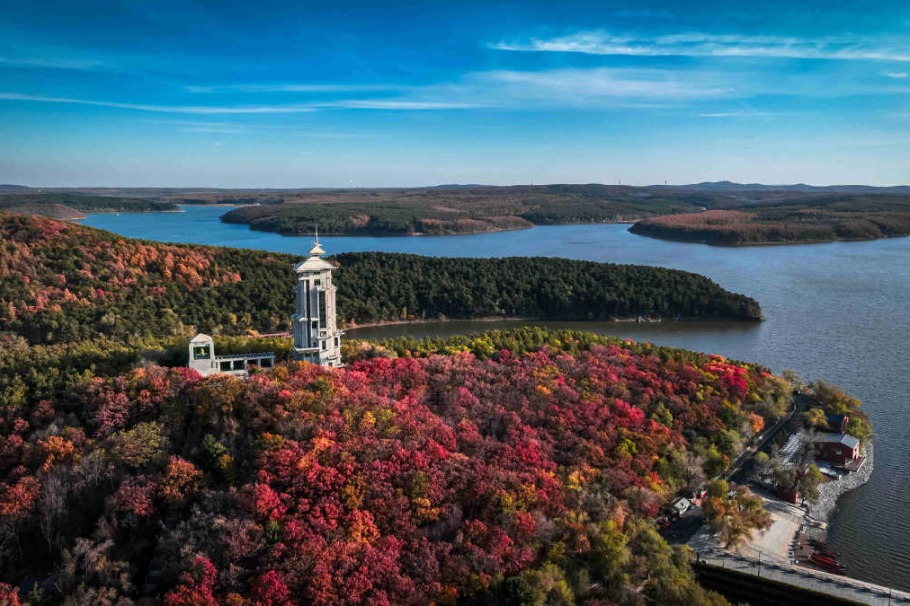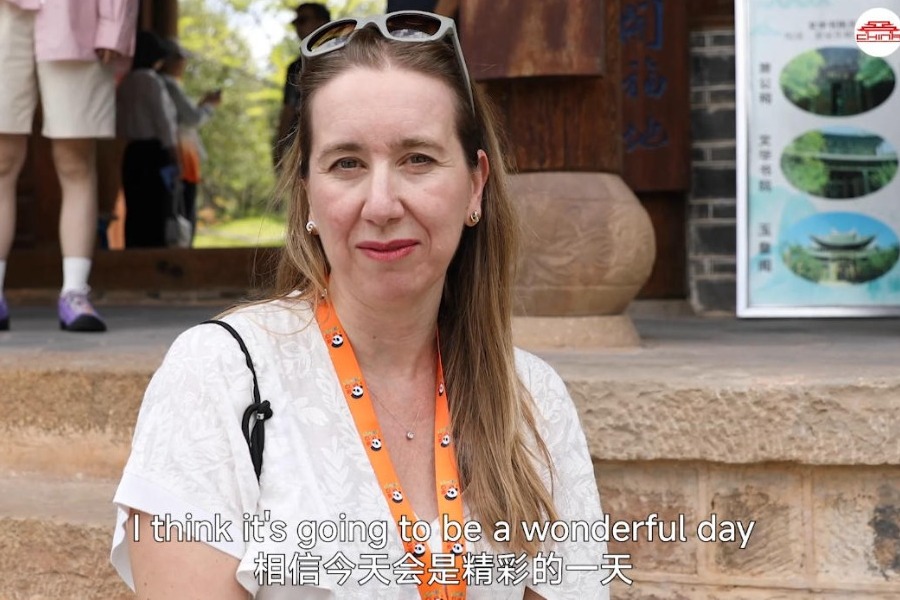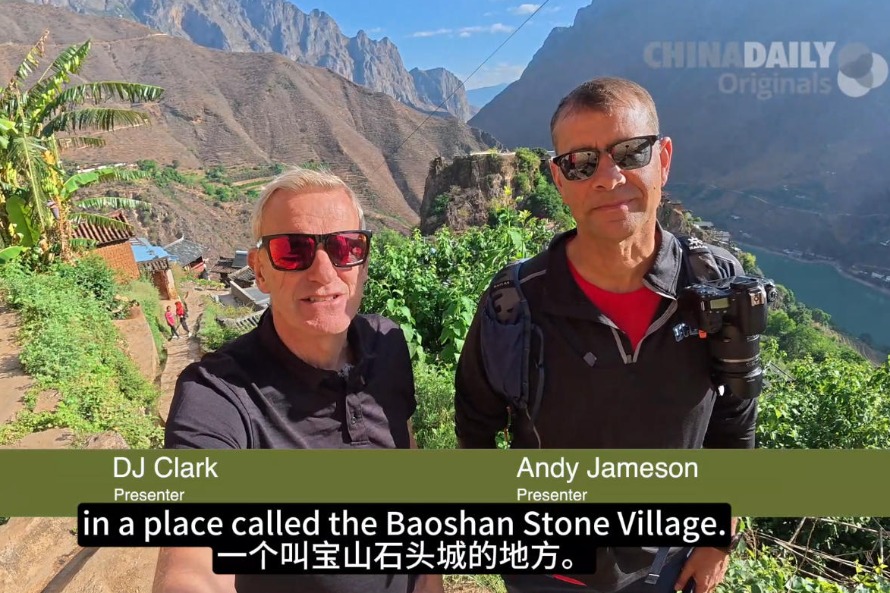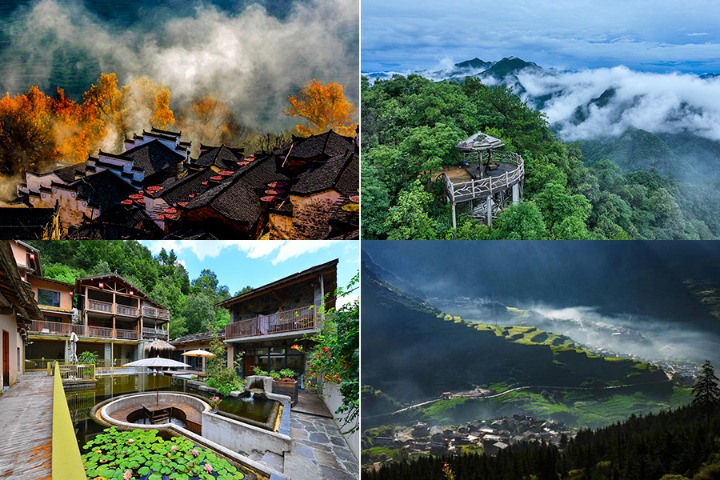New tourism playbook
Europe rewrites the script for experience?hungry travelers, Wang Mingjie reports.


European tourism boards are rethinking how they connect with travelers and who tells their stories as Chinese outbound travel to Europe rebounds after the pandemic. With tourists from China increasingly seeking independent, immersive, and experience-driven journeys, destinations are learning to balance creativity, data, and authenticity in a social media ecosystem that has grown far more complex.
China's outbound travel market is firmly back on track. International trips from the Chinese mainland are projected to reach 155 million by the end of 2025, according to Dragon Trail Research — a sign that the world's largest source of outbound travelers has almost fully recovered. But what inspires these travelers, and how best to reach them, has changed.
"European destinations had to totally rethink their content strategies during COVID-19, and in the early period after reopening when Chinese arrivals were slower than expected," said Gary Bowerman, director of Check-in Asia, a consultancy specializing in the Asia-Pacific region. "Now, the competition to engage Chinese tourists of all ages is fierce — especially as flight capacities between Chinese and European cities have significantly improved — and Chinese social channels are saturated with travel content."
To stand out, Bowerman said, destinations must conduct meticulous research to brief influencers or key opinion leaders, who can create content that resonates with how Chinese tourists wish to travel "in the moment".
"Traveler trends change very fast in China," he noted. "The videos shot and shared this summer may have a short shelf life."
He believes promoters of tourist destinations need to think more like film directors than advertisers, creating emotional touchpoints that inspire authentic storytelling. "Travel marketers have to design experiential 'trigger moments' that allow creators to tell vivid, real-life stories," he said.
Austria has embraced this new direction by highlighting nature, wellness, and outdoor recreation — themes that align strongly with post-pandemic Chinese travel interests.
"During the past years, we have observed that the desire for physical and psychological wellbeing has gained weight in our target group in China," said Emanuel Lehner-Telic, head of markets Asia-Pacific at Austria Tourism. "Nature as an area of relaxation and recharging batteries after a stressful daily life has become more and more important."
This shift has reshaped Austria's influencer strategy.
"We are now looking for outdoor-experienced and sporty people who can not only tell about the beauty of nature but also serve as motivators," he said.
While Vienna's imperial heritage and cultural treasures remain a draw, Austria's Alpine landscapes — its lakes, forests, and mountain trails — are taking center stage.
"Most of our guests come to spend time with family and friends in a refreshing environment: to hike, bike, ski, or simply to be in nature," Lehner-Telic said. "We don't look for top athletes but for people like you and me who enjoy being outdoors."
The key, he added, lies in charisma, authenticity, and storytelling.
"If you have a good story to tell and do that in a convincing way, the audience will literally hang on every word," he said.

Authenticity and specialization
Across Europe, authenticity and emotional connection have become the new currency of influence. Spain's evolving approach reflects that shift. Maria Llinares, former tourism counselor at Spain's embassy in China, said Chinese travelers are seeking "in-depth knowledge of destinations and more personalized inspiration".
Spain's global campaign — "Think You Know Spain? Think Again" — focuses on slow travel and lesser-known destinations, promoting experiences that go beyond the traditional tourist circuit.
"We place greater emphasis on voices genuinely connected with Spain, such as Chinese influencers living here who can transmit passion and insider knowledge," Llinares said.
One standout campaign featured Shanghai influencer Fu Daye, who joined a mountain trail race in the Pyrenees.
"In 2023, there were no Chinese participants; in 2024, after his campaign, there were 200," Llinares said. "It showed how authentic storytelling linked to sports, nature and off-season travel can resonate strongly."
Spain now works more closely with subject experts — from food writers and cultural curators to outdoor enthusiasts — rather than general lifestyle influencers.
"Someone who knows what they're talking about conveys far more passion than someone leveraging popularity in a generic way," Llinares said.
The United Kingdom, meanwhile, is also redefining its influencer strategy to compete in the revived China market. Patricia Yates, chief executive of VisitBritain, said China remains one of the UK's most valuable inbound markets, forecast to be worth 1.1 billion pounds ($1.48 billion) in visitor spending this year.
Chinese travelers, she said, are more experience-driven and rely heavily on social media to find inspiration from influencers and fellow travelers. "To compete for Chinese visitors, we must use the powerful reach of social media — and our work with influencers is a central part of this."
VisitBritain has seen a shift toward independent travel, particularly among Gen Z, or people born between 1995 and 2010, the first "digital native" generation.
"Instead of following a fixed itinerary, visitors now tend to explore based on their own interests, with influencers and social media providing inspiration," Yates said.
She pointed to the recent popularity of Canterbury, which went viral on Xiaohongshu earlier this year as a "storybook town".
"The rise in popularity of these destinations is largely due to influencers and their content," Yates said, "showing how powerful a tool they can be in helping visitors discover Britain's regional destinations".
To attract more visitors, VisitBritain is also tapping into the global appeal of British film and television, which are powerful motivators for travel.
"Our research shows that of those Chinese travelers considering visiting the UK, 96 percent would be interested in visiting film and TV locations during their trip," Yates said.
From September to November, VisitBritain is partnering with the online travel platform Klook, leveraging its influencer network to create customized "set-jetting" destination content.
"The influencer-generated videos will also be developed into film- and TV-themed itineraries," Yates said, adding that the campaign is expected to deliver 2.4 million impressions ahead of the 2026 Chinese New Year travel season.
For VisitBritain, working with creators whose passions align with Britain's strengths — from food and culture to sports and screen tourism — ensures storytelling feels authentic and relevant.
"Ultimately, we aim to work with creators whose content inspires followers to choose Britain as their next destination," Yates said.

The rise of micro-influencers
According to Oliver Sedlinger, an international tourism consultant at Sedlinger and Associates in Beijing, destinations are now more selective about both platforms and creators.
"There is a much bigger choice of platforms available now, and destinations are more discerning — not only about which platforms to use but also which influencers to collaborate with," he said.
Sedlinger said influencer marketing has evolved from an optional add-on to a core pillar of tourism strategy.
"Since the pandemic, promotion via social networks has become a must-have in tourism marketing internationally," he said.
Given limited budgets, destinations must make tough choices.
"They need to decide which platforms are most suitable, which audiences they want to reach, and which influencers will deliver the best impact."
He noted that many destinations are now favoring niche creators over mega-influencers.
"More destinations are choosing creators who focus on selective topics like food, nature, or luxury. These may have smaller audiences, but they're more targeted and loyal," he said.
Wolfgang Arlt, director of the China Outbound Tourism Research Institute, said European destinations have become "more careful in selecting the right person for less money".
"Rather than spending heavily on celebrities with millions of followers, they now go for smaller but more relevant voices," he said.
That trend is also reflected in new multilayered campaigns. Sienna Parulis-Cook, director of marketing and communications at Dragon Trail International, said the company's 2024 collaboration with the European Travel Commission involved three professional KOLs, or key opinion leaders, and more than 100 KOCs, or key opinion consumers, smaller creators whose posts performed strongly on social media.
"These smaller influencers suit platforms where content performance matters more than follower count," she said.
Dragon Trail has also helped destinations explore niche cultural collaborations, such as a campaign for the Polish National Tourism Organization tied to the 2025 International Chopin Piano Competition, which uses music-themed influencer content to promote Poland's cultural richness.
For creators themselves, the shift has also been transformative. Nicola Hu, a travel photographer and blogger who has joined multiple overseas media trips, said tourist destination marketing agencies now value authenticity over audience size.
"In the past, destinations mainly cared about follower numbers, but now it's changing," she said. "Tourism boards want influencers who can represent the curiosity and perspectives of real travelers.
"Travel stories need time to unfold. When you slow down and experience things deeply, your content becomes more emotional and personal — something that can't be achieved by rushing from site to site."
Bowerman agreed that success in 2025 and beyond will depend on crafting cinematic, emotionally resonant stories.
"Tourism marketers are applying creative video tactics learned in China," he said. "Destinations are tailoring their narratives, editing styles, and tones to each platform — what works on Xiaohongshu won't work on other Chinese social media platforms like Kuaishou or Bilibili."
Budgets remain tight, and converting engagement into bookings is still a challenge.
"The key is turning likes and shares into actual trips," Bowerman said.
What's clear, however, is that storytelling has replaced spectacle. Whether it's Austria's mountains, Spain's slow-travel culture, or Britain's film-inspired itineraries, Europe's success in China increasingly depends on finding creators who make experiences feel human, relatable, and worth sharing.
Contact the writer at wangmingjie@mail.chinadailyuk.com.

































